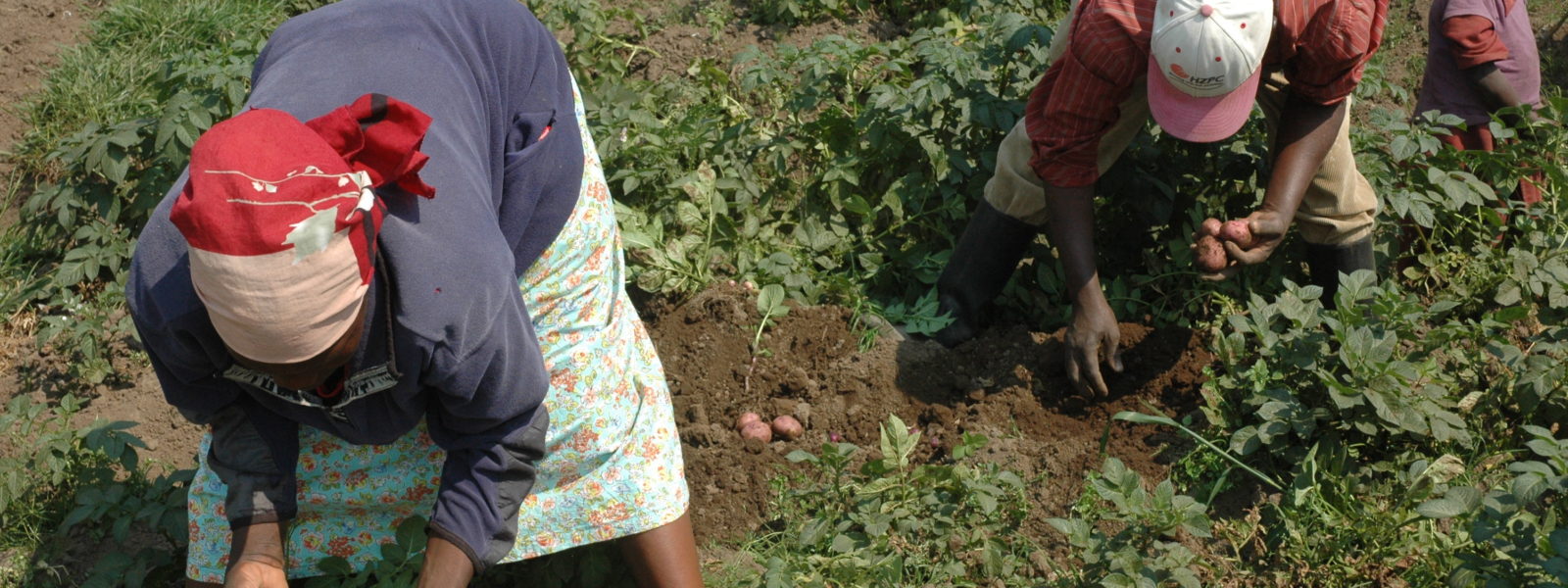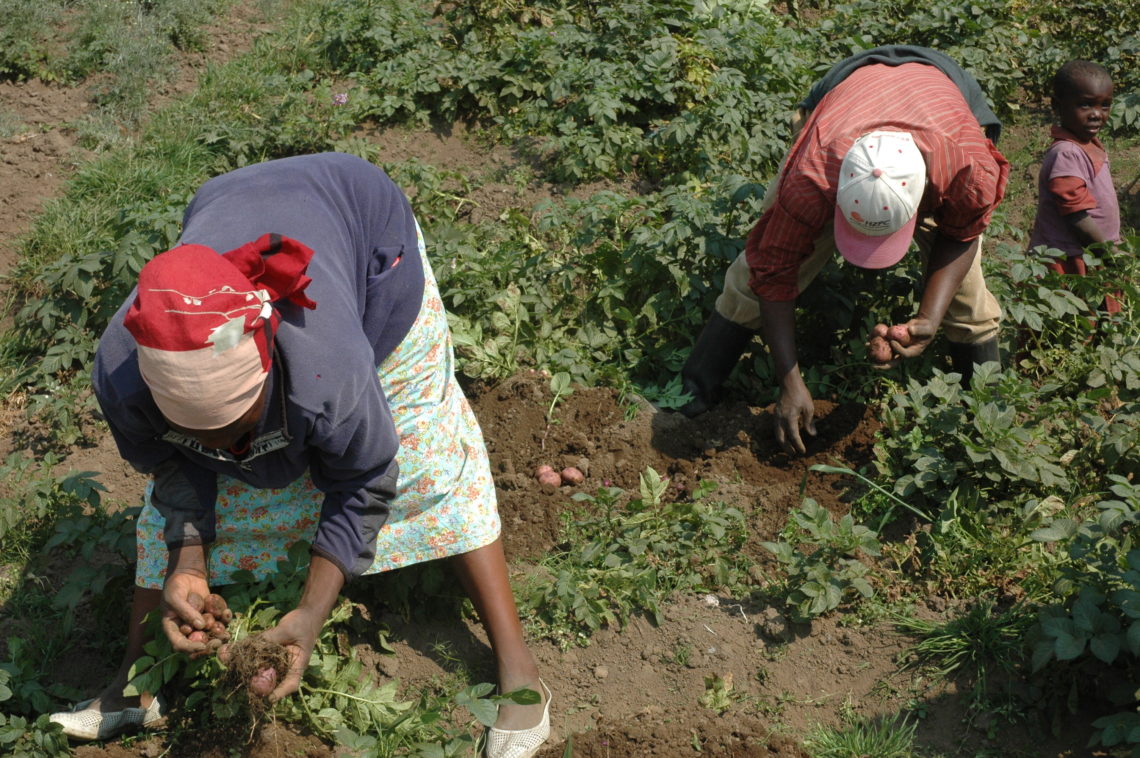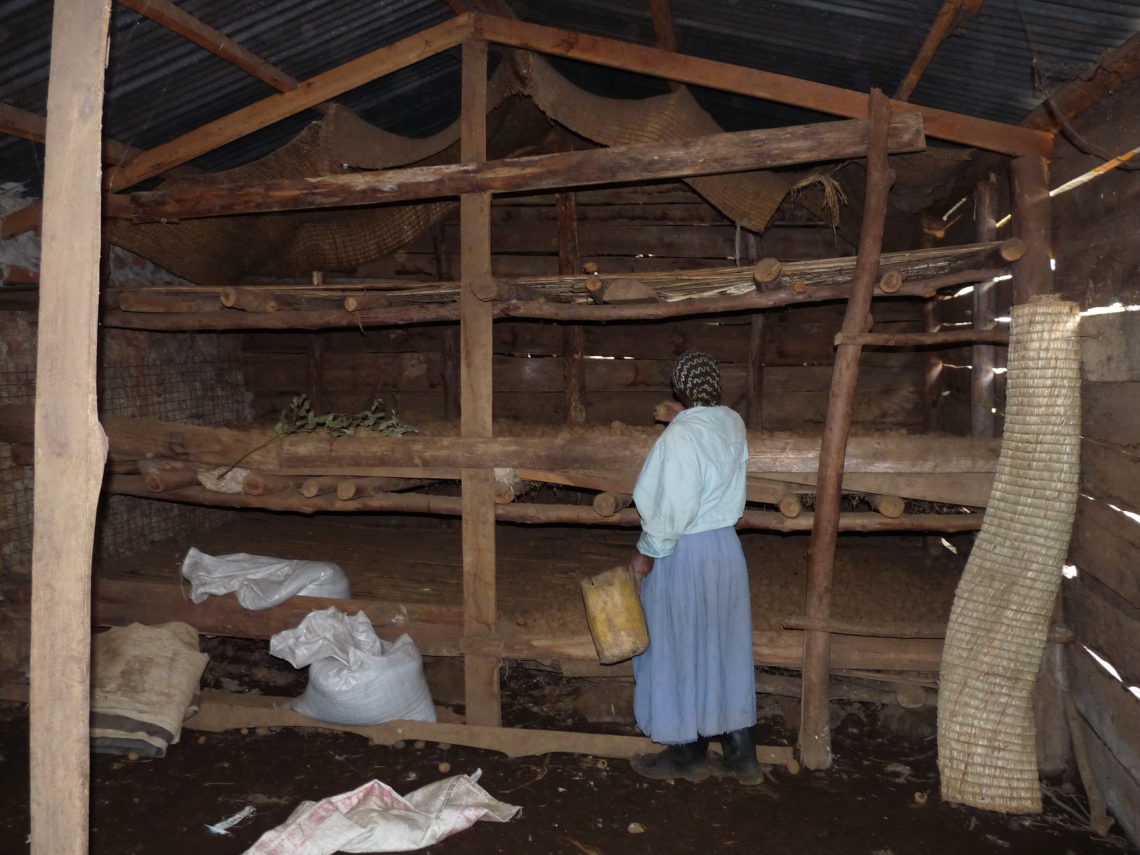Results from a household survey of farmers in Rwanda and Burundi challenge our stereotypes about how women and men engage in growing roots, tubers and bananas. In male-headed households, decision-making and labor-provision were most of the time joint efforts by men and women, while in female-headed households, men made most of the decisions and supplied most of the labor.
“It is truly surprising,” said Joshua Okonya, lead author on the study. Okonya, a research associate with the International Potato Center (CIP) and CGIAR Research Program on Roots, Tubers and Bananas (RTB) based in Kampala, Uganda, says that one of the key messages of the study is that gender is a complex subject that requires a deeper understanding of the community.
The survey looked at 811 farming households in two watersheds, Rusizi in Burundi and Ruhengiri in Rwanda. Each farmer grew at least two of four RTB crops; bananas and potatoes, primarily as cash crops to be sold at market, and sweetpotato and cassava as food crops to be eaten by the family. (Previous results from the survey looked at understanding farmers’ concerns in pest and disease management and the safer use of pesticides.)
Most of the households (80% in Burundi and 84% in Rwanda) were headed by men, usually a father or husband. In Rwanda, female-headed households had a combined on-farm and off-farm income less than half that of male-headed households. In Burundi, by contrast, female- and male-headed households had similar incomes. In general, lower farm incomes were observed where men participated less. This may be because men were able to earn more by working off the farm. Households with lower total income, especially those far from markets, showed increased joint decision-making.
Two factors may explain this, Okonya suggests. “Men can walk or ride a bike further than women, and when markets are far from home the women, who are in charge of most household chores and childcare, cannot spend long hours away from home.”
Whose crops?
Traditionally, cash crops are controlled by men while women control food crops, but the survey tried to uncover the details by asking who made the decisions about 10 different activities, from preparing the land to weeding and pest control, through to finally selling the crop. Separately, surveyors asked who actually carried out those activities.
For food crops and cash crops alike, men and women jointly took decisions and provided labor in almost half the male-headed households. Surprisingly, perhaps, in female-headed households men made most of the decisions and provided most of the labor. Fewer than one in five female-headed houses reported joint decision-making and labor. The proportion was slightly higher for cash crops (banana and potato, 17%) than for food crops (cassava and sweetpotato, 13%).
“Most female-headed households have an adult male around; an adult son, a father, a friend or a hired worker,” Okonya explains. “The female head consults and can delegate some duties to these men.”
Social norms rule
Social norms do still govern many activities. In Burundi, for example, girls are not permitted to prepare the land for bananas or plant bananas, because they do not own the land. Men show little interest in sweetpotato as a crop, because the roots are not usually sold. Violence is also a factor, with women telling the surveyors that they avoid asking men how they spent cash from crop sales.
This makes it imperative, the study says, for men to be continually sensitized and enlightened, to stop using violence against their wives and to increase the involvement of women in all aspects of farming. Where women do have their own plots, they decide what to grow and how to spend the proceeds, usually on school fees for their children and taking care of the home.
“Once men appreciate the role and significance of women making decisions and handling the cash from crop sales, then cultural norms as a gender-based constraint may gradually dissipate,” the study concludes.
Achieving equity
A surprise result is that women do not provide 60-80% of the agricultural labor, as was previously thought. At least for Burundi and Rwanda, this is simply a myth, for the four RTB crops in the study. It is not possible to say how much labor the women in this study do provide, because the researchers did not look at time budgets. However, even for weeding, the task to which women contribute the most, in only about 15% of households did women do all of the work.
“This finding absolutely changes the way we previously imagined women’s participation in banana production,” said Okonya. “The reason could be strong cultural norms, where girls are raised from childhood being told that banana is a man’s crop.”
The survey’s results will provide additional impetus for RTB research to deliver improved varieties that farmers like and that are resistant to various stresses. Work to improve links to markets and value chains will also continue. With specific regard to gender, Okonya sees a large contribution to future changes.
“Results will inform policymakers and development partners to design gender transformative approaches to women’s empowerment,” he said.
Traditional gender norms recognize men as the main decision-makers at household and community levels. That perception is already changing. According to this study, women and men perceive their contributions differently. Women tend to say that decisions are mostly made by men, while men say that decisions are mostly made jointly.
“This is a good thing,” Okonya said, “and shows that cultural norms can change and equity can be achieved.”


